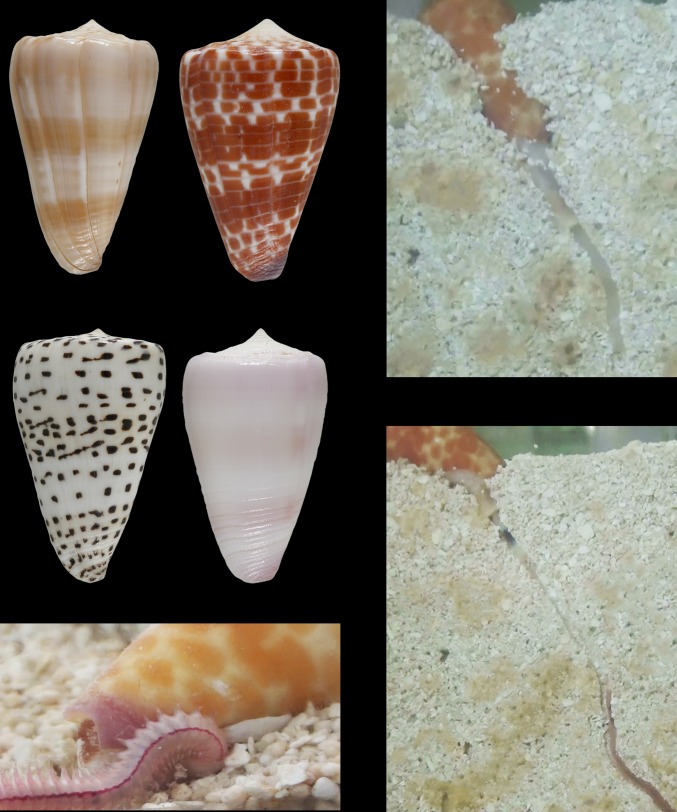Fig. 1.
C. tessulatus and related cone snails. (Top Left) Shells of the Tesseliconus clade are shown. Clockwise from top left: C. sandwichensis (Oahu, HI); C. tessulatus (Cocos Island, off Mexico); C. suturatus (Queensland, Australia); and C. eburneus (Cebu, Philippines). C. tessulatus is geographically the most widely distributed of all Conus species. In contrast, C. sandwichensis is an endemic species, restricted to the Hawaiian Islands. (Bottom Left) C. tessulatus engulfing its polychaete worm prey on the surface. (Top Right) Close-up view of C. tessulatus extending its proboscis. (Bottom Right) C. tessulatus attacking worm prey buried under the substrate.

